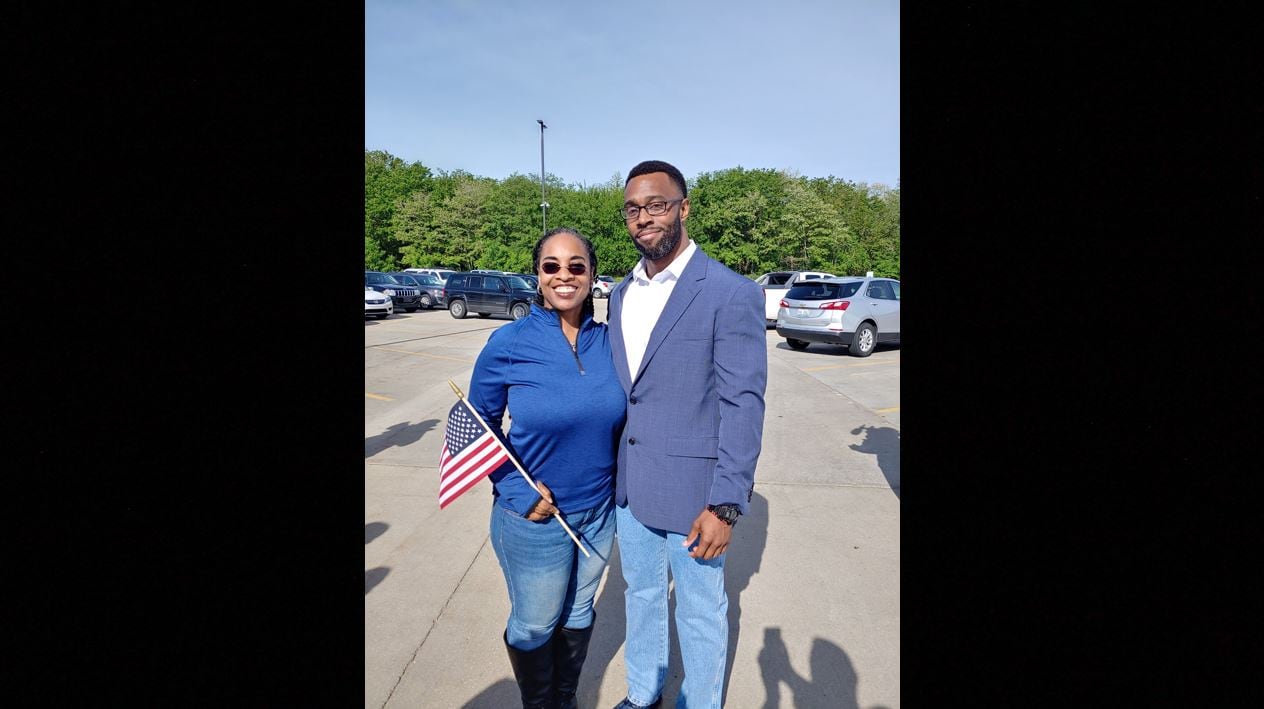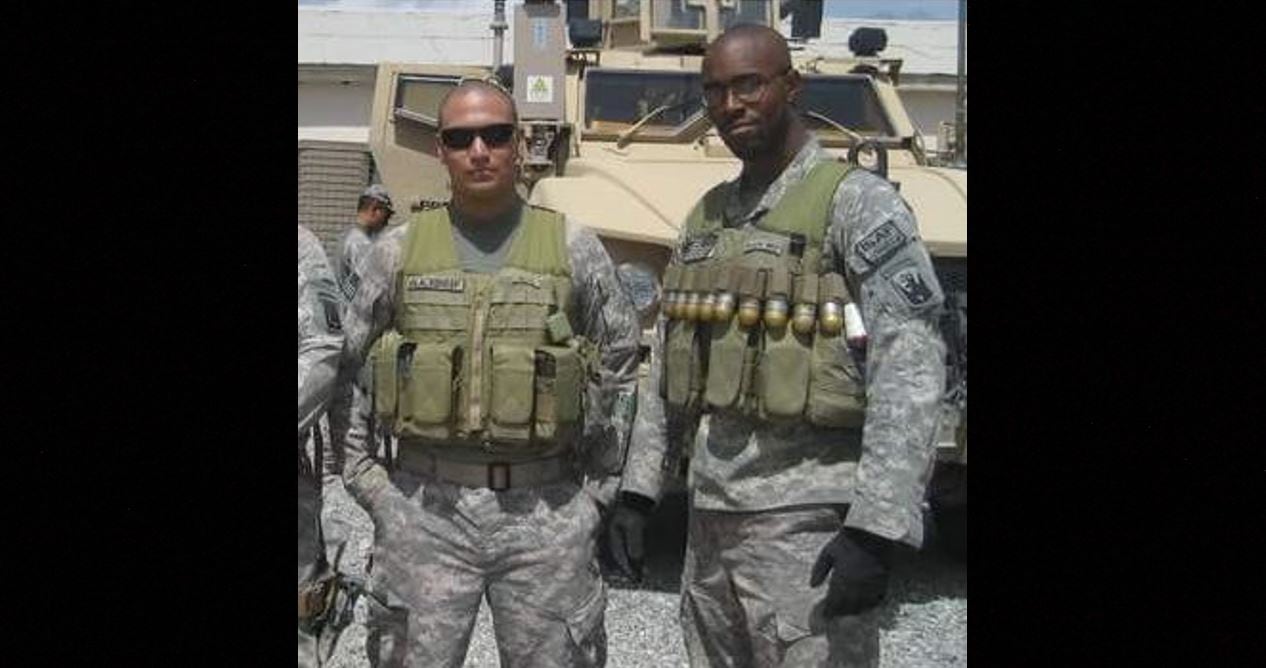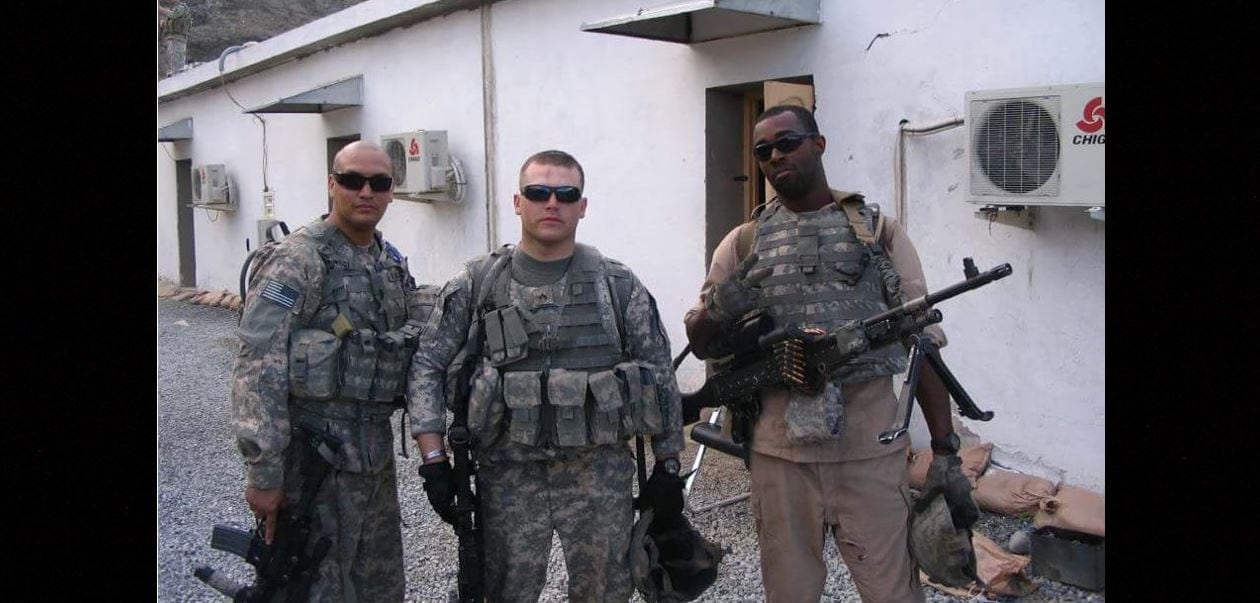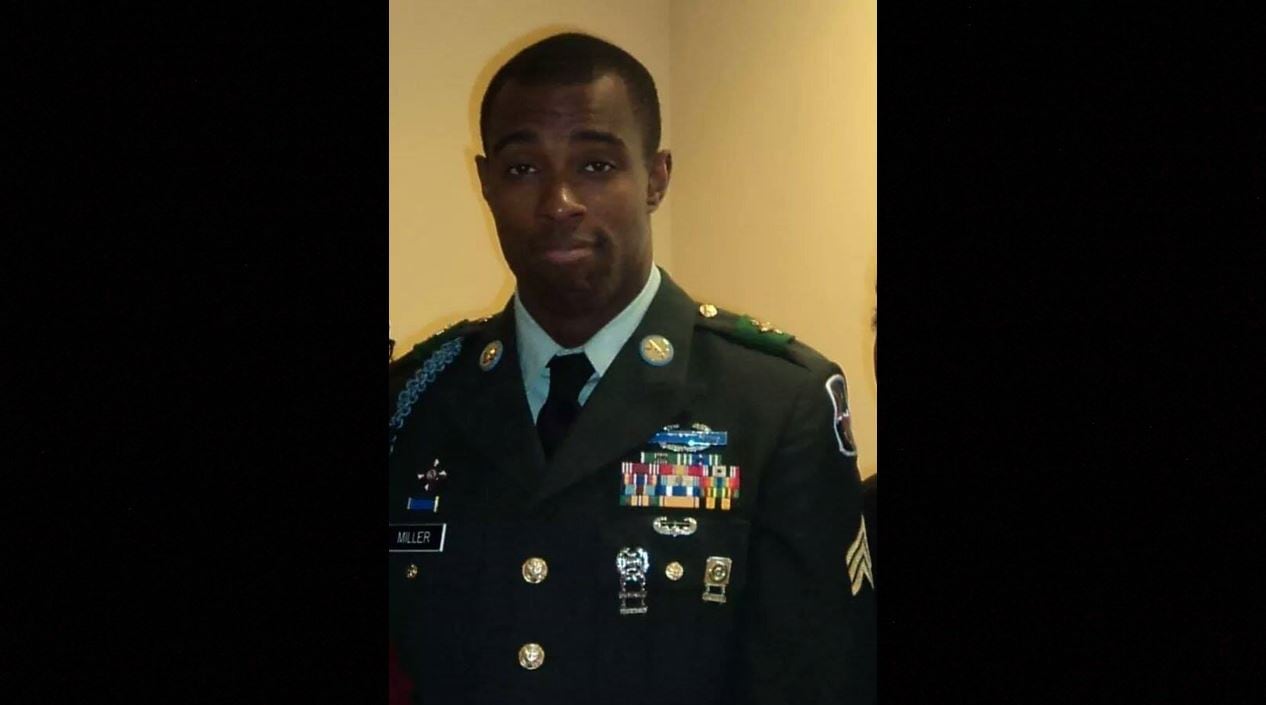Sgt. Derrick Miller’s case looked open and shut among the various war crime allegations that have come out of the conflicts in Afghanistan and Iraq over nearly two decades.
A Maryland Army National Guard infantryman at the end of his third combat deployment shot an unarmed Afghan man during an interrogation at gunpoint on Sept. 26, 2010, in Laghman province, prosecutors said. They successfully charged Miller with premeditated murder and put him away for a life sentence in military prison at Fort Leavenworth.
Six years later, a bipartisan congressional push, a charity that funds legal support for troops accused of war crimes and a former Marine Corps JAG officer whose career has been praised for defending detainees at Guantanamo Bay, said the case deserved a second look.
Miller’s supporters quickly managed to get his sentence reduced and he was paroled in May. Now they’re seeking a pardon from President Donald Trump to clear his record.
His advocates say that the circumstances leading up to the shooting, and immediately following, provide context that supported Miller’s version of events — that he shot a Taliban scout who attempted to steal his Beretta 9mm pistol during questioning.
They say that man had been caught coming through their lines before. After allegedly feeding information to insurgents, the Taliban were able to launch a coordinated attack targeting the U.S. soldiers’ command vehicle within an hour of the shooting, according to Miller’s platoon leader.
But issues with the case against Miller go further, his supporters say.
No photos. No body.
For one thing, a comprehensive forensic analysis wasn’t completed, which could have shown that the man grabbed Miller’s handgun by the barrel and pistol grip before Miller shot one round into him.
“There’s no photos. No body. No examination of the body. No autopsy. I mean, really no forensic examination whatsoever," said ret. Marine Lt. Col. Colby Vokey, Miller’s attorney, whose legal fees are paid by the charity United American Patriots.
The forensics could have shown gunpowder residue on the Afghan’s hands, or matched fingerprints to the barrel, indicating contact with the weapon. A biometric scan could have also shown whether the man was on an electronic “watch list” documenting suspected insurgents, and an examination of the body could have shown entry and exit wounds.
Instead, the body was turned over to locals and never seen again — not an unexpected outcome during a war in a developing country. Afghan National Police reportedly took photos of the scene, but those did not include the body itself.
The Afghan man was identified as Atta Mohammad, a 60-year-old electrician who approached the U.S. position to conduct work and was partially deaf, according to his son.
Some early media reports in 2011 relied on the son to allege that the Americans abducted Mohammad from his home while patrolling in the area. That narrative appears at odds with even the prosecutors in Miller’s trial, who said that after an interrogation within the patrol base, Miller alone straddled the man on the ground and shot him.
The case against Miller largely rests on two witnesses who may have been coerced by investigators, according to Vokey.
“One was the interpreter, who was given passage to the U.S. and a visa," he said. “And one other soldier whose first two statements backed what [Miller] said — that there was a struggle and [Miller] shot him.”
“Do I know of any explicit agreement, no," Vokey said concerning the allegations against the interpreter. “But I do know he didn’t want to testify until they promised him a visa.”

The other soldier was also threatened by investigators to be charged as an accomplice in the murder, according to Vokey. Army Times was given his name, but was not able to obtain an interview.
Because the U.S. soldier changed his testimony after interactions with Army Criminal Investigation Division, some feel that its agents pressured him to change his story. That isn’t uncommon, according to retired Army Lt. Col. Jeffrey Addicott, a former JAG who spent a quarter of his career as a senior legal adviser to Army Special Forces.
“It does happen,” Addicott, who is not part of Miller’s case, said. “Part of the issue with investigators is a lack of integrity. I’ve seen this too many times where investigators don’t play by the rules."
Finally, there was also a sentencing disparity in Miller’s case. His premeditated murder charge carried a mandatory life sentence.
Even throwing out Miller’s argument that he acted in self-defense, a University of Chicago Law School clinic wrote in 2016 that the crime would be better described as voluntary manslaughter, which carries a maximum 15-year sentence.
“Derrick [Miller], who is African-American, is serving a longer sentence than most of the Caucasian soldiers who committed combat-related homicides,” the project wrote. “Worse, Derrick, a soldier who killed in defense of his comrades, faces more time in prison than most civilian murderers.”
‘Probably saved lives’
In light of the case’s problems, Rep. Louie Gohmert, R-TX., and Rep. Elijah Cummings, D-MD., emerged as supporters of Miller’s effort to be paroled.
Vokey managed to get a special hearing in April 2018 before the Army Clemency and Parole Board that reduced Miller’s sentence based on the issues brought forward, and parole was granted in February of this year.
At the clemency hearing, retired Sgt. 1st Class Jason Tinelle, who served as the platoon leader on Miller’s deployment due to a shortage of lieutenants, testified that Miller’s actions in 2010 saved the lives of his fellow soldiers.
After the shooting, Tinelle had his troops load into their armored vehicles, alerting them that a Taliban attack was coming.
“I wouldn’t have done that otherwise,” Tinelle told Army Times. “Because I put everyone at 100 percent security, when the first volley of RPGs and machine-gun fire came, we avoided a mass casualty situation. His actions actually probably saved lives.”
The fire was largely focused on the command vehicle Tinelle was sitting in, indicating that the enemy had an understanding of the platoon’s setup.
Tinelle said “there’s no doubt” in his mind that the Afghan who Miller shot was affiliated with the Taliban. The day before, that Afghan was allegedly shuttling men armed with AK-47 assault rifles through their lines to a battle that was occurring in an adjacent valley five kilometers away.

The U.S. soldiers in Miller’s platoon were forced to let them go because the armed occupants had the right paperwork to be in the area and the rifles are common enough among Afghan civilians to not warrant long-term detention.
“In past wars, if we set up a line of defense, then nobody would be allowed to come into it," Tinelle said. "Over there, when we put up a defense, we have to let all the locals through, and of course they disguise themselves as the locals and they come through and they count machine guns and they count trucks and they point out leader trucks.”
The man Miller shot was driving the truck with armed, military-age males that day, the soldiers said. When the Americans searched the vehicle, they found a laptop along with the rifles and extra ammunition, Miller told Army Times.
“Their IDs looked really sketchy, like they were made on that laptop, but the senior NCO on the ground made the decision that we didn’t have enough to detain them,” Miller said.
The Afghan men were allowed to go and continued off into the valley where a battle between Taliban and U.S. forces raged all night, Miller added. The next morning, the Afghan man who had been driving the truck came back.
“He had walked the southern side of our perimeter. Him and two other military-age males came around the south side of our patrol base, basically where we had our mortars and our TOW missile set-up on top of a hill,” Miller said.
‘I pushed through his grip and I fired one shot’
The interlopers began talking to the platoon’s Afghan partner forces, asking questions and walking around until told to leave. About two hours later, the Afghan man came back, this time to the front of the patrol base where Miller’s gun truck and the command vehicles were located.
The man was told by a machine gunner to leave again and not come back.
“Once he started to leave, I get a gut feeling that something wasn’t right,” Miller said. He asked the platoon sergeant for permission to detain the man and ask him questions with the aid of their interpreter and the other U.S. soldier near the latrines.
When asked what he was doing in the area, the man said he was there to fix water pumps. Later on, that answer changed to doing electrical work. The man didn’t have the tools for either job, Miller said.
When asked about the truck he had been driving the day before, the Afghan man said that it wasn’t him because he couldn’t drive. After being frisked, the soldiers found he was carrying vehicle keys.
“At that point, I had a sense of urgency,” Miller said. “I drew my pistol and pointed it at him.”

Miller told the man to explain where the truck went to last night and what he was doing at the base today, “or I’m going to kill you.”
The Army Field Manual doesn’t endorse that technique, stating that a human intelligence “collector must be extremely careful that he does not threaten or coerce a source. Conveying a threat may be a violation of the UCMJ.”
However, the manual also states that “fear is a dominant emotion that can be exploited." It encourages intelligence collectors to make use of nonspecific fears, such as “You know what can happen to you here?” the manual reads.
“I basically gave him a threat to try to get the information that I needed faster and between my words and the interpreter’s translation, I don’t know if something was lost, but the dude reached up and grabbed my pistol,” Miller said.
“He came up with two hands, one hand was over the top of the barrel and the other hand was around mine which was grasping the pistol grip," Miller added. "Once he had that, natural training kicked in, I pushed through his grip and I fired one shot.”
The Afghan man died on the spot, and Miller was taken into custody by military police. Within the hour, the attack started and it was only broken after close-air support was called in, Miller said.
Miller is now paroled and a free man. But he is still a felon in the eyes of the state, unable to bear arms and vote, and a dishonorable discharge still smears his name, which a pardon would solve.
Now free, Miller said he’s exploring job opportunities with a few employers — one on Capitol Hill and the other with a real estate developer. Both are understanding of his conviction.

“Whatever job I have to do, whether it’s scrubbing toilets or working for a congressman, I will do it to provide a stable future for my daughters,” Miller said. He added that he intends to advocate for military justice reform, which still has issues in the realm of how evidence is handled, how the discovery process is undertaken and how appeals are undertaken.
“I already have enough in life. I have my kids. I have my mom. I have my family," Miller said. "There are guys at Leavenworth who don’t have that. And I want to fight to help those guys who were either wrongfully accused or over-sentenced get a second chance.”
Vokey said that Miller’s case is a good example of why there have been suggestions to form a committee to review war crimes cases before they’re turned over to military prosecutors. Miller’s case may have been better charged as a violation of the rules of engagement, for instance.
“There’s a lot of flexibility there in how it can be charged, rather than leaving it to the discretion of a prosecutor who’s trying to be as competitive as possible in securing a conviction," Vokey said. “Especially in the military, they over-charge things quite a bit.”
A review process could also better check the investigators charged with gathering evidence.
“These guys build careers on these cases and they sensationalize them and they’re certainly not out there looking for the truth," Vokey added. “They’re not trying to secure good evidence. They’re looking to build bad evidence.”
Kyle Rempfer was an editor and reporter who has covered combat operations, criminal cases, foreign military assistance and training accidents. Before entering journalism, Kyle served in U.S. Air Force Special Tactics and deployed in 2014 to Paktika Province, Afghanistan, and Baghdad, Iraq.




